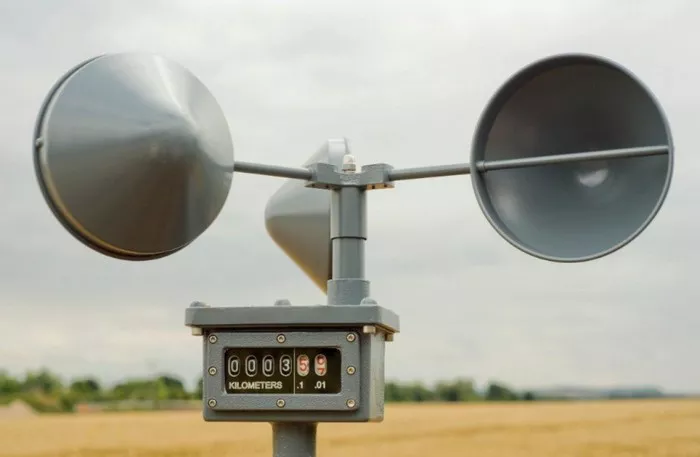Constant Temperature Anemometers (CTA) are a crucial type of hot-wire anemometry used for high-precision fluid flow measurements. These devices operate on the principle of maintaining a heated sensor at a constant temperature, adjusting the electrical current to compensate for convective heat loss due to airflow. This article explores the fundamental working principles, applications, advantages, and limitations of CTA systems in mechanical and fluid dynamics research.
Working Principle of Constant Temperature Anemometers
1. Basic Concept
A CTA system consists of a thin metal wire or sensor probe that is electrically heated and exposed to a moving fluid. The heat loss from the wire is directly proportional to the velocity of the fluid passing over it. Unlike other anemometers, CTA maintains the wire temperature constant by dynamically adjusting the current supplied to it.
2. Feedback Control Mechanism
The CTA operates using a closed-loop feedback circuit, which continuously monitors and regulates the current passing through the wire. When airflow increases, heat dissipation from the wire also increases, causing a drop in temperature. The system compensates by increasing the current to restore the wire to its preset temperature. The electrical signal required to maintain this temperature is then used to determine the velocity of the fluid.
3. Heat Transfer Equation
CTA operation is based on King’s Law, which describes the relationship between the electrical power supplied to the wire and the fluid velocity:
P=A + BU^n
where:
- P = Power supplied to the sensor
- U = Flow velocity
- A,B,n = Calibration constants
This equation forms the basis for velocity calibration in CTA anemometry.
Components of a CTA System
A typical CTA system comprises:
Sensor Probe: A fine platinum or tungsten wire, typically 5–10 micrometers in diameter, used for precise measurement.
Bridge Circuit: A Wheatstone bridge circuit that maintains the wire at a constant temperature.
Amplifier and Feedback Circuit: Adjusts the electrical current dynamically to maintain the desired wire temperature.
Data Acquisition System: Converts electrical signals into measurable velocity data.
Applications of Constant Temperature Anemometry
CTA is widely used in various scientific and industrial fields where detailed flow measurements are necessary. Some key applications include:
1. Aerodynamics and Wind Tunnel Testing
CTA is extensively used in wind tunnels for studying turbulence, boundary layers, and wake formations in aircraft and automotive engineering.
2. Turbulence Research
Due to its high-frequency response, CTA is ideal for capturing small-scale turbulence structures in gas and liquid flows, aiding in computational fluid dynamics (CFD) validation.
3. Biomedical Applications
CTA is employed in medical research to analyze airflow in respiratory studies, optimizing inhalers, and studying human lung function.
4. Combustion Diagnostics
It is used in flame and combustion studies to measure gas velocity fluctuations and optimize fuel efficiency in power plants and engines.
5. Environmental Monitoring
CTA is used to study atmospheric turbulence and air quality by measuring wind velocity fluctuations in meteorological research.
Advantages of CTA Over Other Anemometers
1. High Temporal Resolution
CTA can measure rapid fluctuations in fluid velocity, making it superior to other anemometry techniques.
2. Minimal Flow Disturbance
Since the sensor wire is extremely thin, it introduces negligible obstruction in the fluid flow, ensuring accurate measurements.
3. Wide Velocity Range
CTA can measure both low and high-speed flows, making it versatile for various applications.
4. Real-time Data Acquisition
The closed-loop feedback system provides instantaneous response to velocity changes, making CTA ideal for dynamic flow environments.
Limitations of CTA
Despite its advantages, CTA has certain limitations:
1. Calibration Sensitivity
CTA systems require frequent recalibration to maintain accuracy, especially when operating in different fluid mediums.
2. Fragility of the Sensor Wire
The fine sensor wire is delicate and can easily break under mechanical stress or contamination.
3. High Cost
Advanced CTA systems are expensive due to their high-precision components and sophisticated feedback electronics.
4. Influence of Temperature Variations
External temperature fluctuations can affect sensor readings, requiring compensation mechanisms in the system.
Conclusion
Constant Temperature Anemometers are powerful tools for fluid dynamics research, offering high accuracy and temporal resolution for studying airflow and turbulence. Despite certain limitations, their ability to provide real-time, detailed flow measurements makes them indispensable in aerodynamics, biomedical applications, and environmental studies. As technology advances, improvements in sensor durability, signal processing, and automated calibration will further enhance the capabilities of CTA systems in various engineering and scientific domains.

